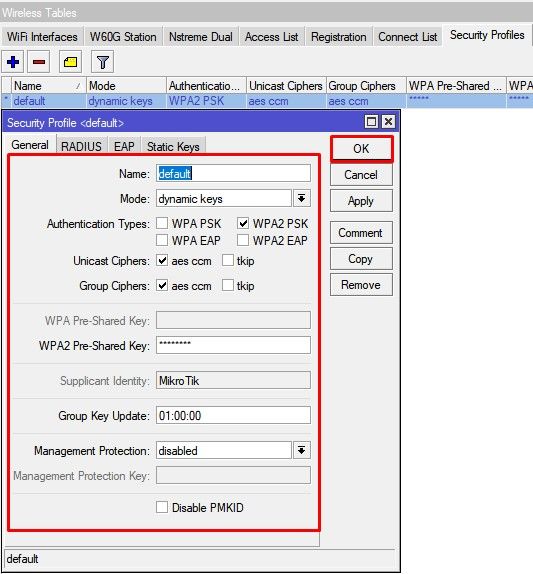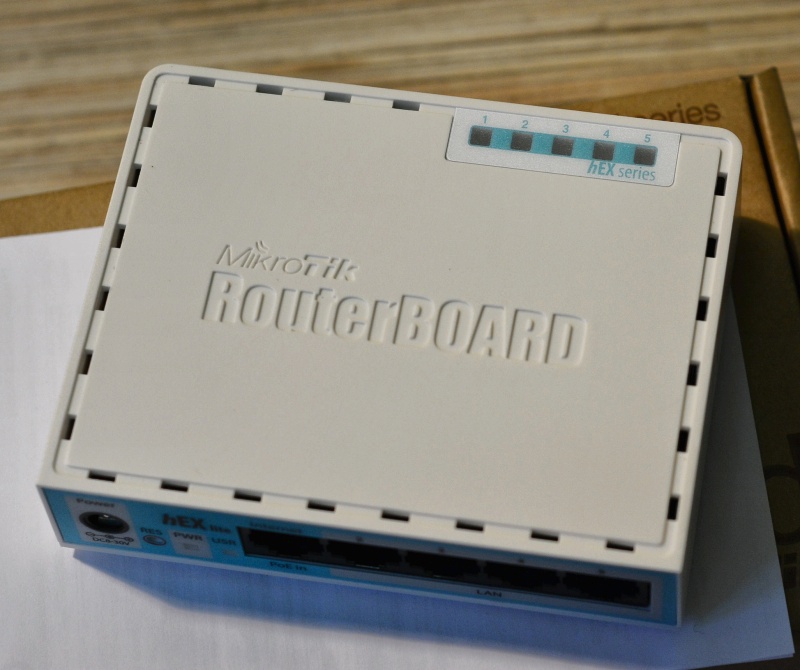Mikrotik hex poe lite. обзор от вива-телеком
Содержание:
- PoE-Out Configuration
- PoE-Out Monitoring
- Эксклюзивный обзор Mikrotik hEX PoE lite от ЗАО «Вива-Телеком»
- Обзоры других сетевых маршрутизаторов Mikrotik от ЗАО «Вива-Телеком»
- Troubleshooting
- PoE Out examples
- How it works
- Эксклюзивный обзор Mikrotik hEX-PoE от ЗАО «Вива-Телеком»
- MikroTik supported PoE-Out standards
- PoE-Out notifications
PoE-Out Configuration
PoE Configuration is supported on all MikroTik devices with PoE-Out interfaces, the configurations can be edited from the RouterOS and SwOS interfaces.
RouterOS
Usage
RouterOS provides an option to configure PoE-Out over Winbox, Webfig and CLI, basic commands using the CLI are
| Property | Description |
|---|---|
| print () | Prints PoE-Out related settings. |
| export () | export is displayed under menu. |
| monitor (string| interface) | Shows poe-out-status of a specified port, or all ports with command. |
| power-cycle (time:0..1m |; Default: 5s) | Disables PoE-Out power for a specified period of time. |
Global Settings
Some MikroTik PoE-Out devices support global PoE setting which can be configured under menu.
Global setting ether1-poe-in-long-cable feature disables strict input/output current monitoring (short detection) to allow the use of PoE-Out with long ethernet cables and/or avoiding improper short-circuit detection.
| Property | Description |
|---|---|
| ether1-poe-in-long-cable (yes | no) | Setting it to «yes» will disable short detection on all poe-out ports. This is potentially dangerous settings and should be used with caution |
Note: Global setting of ether1-poe-in-long-cable can also affect PoE-Out behaviour on PSE which is powered using a DC connector
Port Settings
PoE-Out can be configured under menu. Each port can be controlled independently.
| Property | Description |
|---|---|
| name () | Name of an interface |
| poe-out (auto-on | forced-on | off; Default: auto-on) | Specifies PoE-Out state
|
| poe-priority (integer:0..99 | any; Default: 10) | poe-priority specifies the importance of PoE-Out ports, in cases when a total PoE-Out limit is reached, interface with the lowest port priority will be powered off first.
Highest priority is 0, lowest priority is 99. If there are 2 or more ports with the same priority then port with the smallest port number will have a higher priority. For example, if ether2 and ether3 have the same priority and over-current is detected then PoE-Out on ether3 will be turned off. Every 6 seconds ports will be checked for a possibility to provide PoE-Out if it was turned off due to port priority. |
| poe-voltage (auto | low | high; Default: auto) |
Power-cycle settings
RouterOS provides a possibility to monitor PD using a ping, and power-cycle a PoE-Out port when the host does not respond. power-cycle-ping feature can be enabled under menu.
| Property | Description |
|---|---|
| power-cycle-ping-enabled (yes | no; Default: no) | Enables ping watchdog, power-cycles port if a host does not respond to ICMP or MAC-Telnet packets. |
| power-cycle-ping-address (IPv4 | IPv6 | MAC; Default: ) | An address which will be monitored. Since RouterOS 6.46beta16, an active route towards PD is required in case an IP address is configured, so make sure PSE can reach the PD. In case MAC address is specified, PSE will send MAC-Telnet ping requests only from specified ethernet interface. When configuring a or some way of VLAN switching, it is recommended to use IP address for monitoring your PD. |
| power-cycle-ping-timeout (time:0..1h |; Default: 5s) | If the host does not respond for more than <timeout> period of time, then PoE-Out port is switched off for 5s. |
| power-cycle-interval (time| any; Default: ) | Disables PoE-Out power for 5s between specified interval. Not related with power-cycle-ping feature. |
- PoE Out — Change between modes (auto/on/off)
- PoE Priority — Change the of port (0…8)
- Voltage Level — Change between two voltage outputs on PoE-Out ports (auto/low/high)
PoE-Out Monitoring
RouterOS
MikroTik devices with PoE-Out controller (not injector) provides port monitoring option.
| Property | Description |
|---|---|
| name () | Name of an interface |
| poe-out () | Shows PoE-Out settings |
| poe-out-status () | Shows current PoE-Out status on port
Delivered voltage at PD is too low for normal powering (for example Vmin = >30V, but provided 24V); PD uses second power source which has a higher voltage than PSE, so all current is taken from second DC source, not PSE PoE-Out port; off — all detection and power is turned off for this port; |
| poe-out-voltage () | Displays PoE Voltage which is applied to the PD. |
| poe-out-current () | Displays port current (mA) which is drawn by the PD. |
| poe-out-power () | Displays PD power consumption |
If feature is used, will show additional fields:
power-cycle-host-alive: <YES/NO> (Shows if monitored host is reachable) power-cycle-after:<TIME> (Shows time, after which the port will be power-cycled)
SNMP
SNMP OID tables:
- 1.3.6.1.4.1.14988.1.1.15.1.1.1 — interface id
- 1.3.6.1.4.1.14988.1.1.15.1.1.2 — interface names
- 1.3.6.1.4.1.14988.1.1.15.1.1.4 — voltage in dV (decivolt)
- 1.3.6.1.4.1.14988.1.1.15.1.1.5 — current in mA
- 1.3.6.1.4.1.14988.1.1.15.1.1.6 — power usage in dW (deviwatt)
SNMP values can be requested also from the RouterOS, for example, will print current mA from all available PoE-Out ports:
/tool snmp-walk address=10.155.149.252 oid=1.3.6.1.4.1.14988.1.1.15.1.1.5
To get very specific OID value, use tool (displays current mA on ether3 interface):
tool snmp-get address=10.155.149.252 oid=1.3.6.1.4.1.14988.1.1.15.1.1.5.3
SwOS
A PoE-Out controller will enable certain monitoring features also from SwOS, such as PoE-Out Status, PoE-Out Current, PoE-Out Voltage and PoE-Out Power usage.
All PoE-Out configuration and monitoring is located on one page, under PoE tab :

Эксклюзивный обзор Mikrotik hEX PoE lite от ЗАО «Вива-Телеком»
«Комплект поставки PoE маршрутизатора Mikrotik hEX PoE lite.В комплект входит:1. Маршрутизатор2. Кабель питания и блок питания3
Руководство эксплуатации.Все лаконично, ничего лишнего.»
«Передняя панель роутера Mikrotik hEX PoE lite.Все сетевые порты роутера расположены на передней панели.Слева направо расположены разъем питания, кнопка RESET, индикатор питания, индикатор активности и 5 портов 10/100 Mbit/s Ethernet с Auto-MDI/X.Пройдемся немного по сетевым портам, через первый порт можно запитать само устройство, если у вас есть коммутатор с PoE интерфейсом, то это легко организовать когда рядом с роутером нет розеток.Последующие порты со 2 по 5 могут сами запитывать другие устройства, буль то точки доступа, IP-телефоны и прочие устройства.Обратите внимание, что один порт может выдать до 1 А или 2 А на все порты.То есть если вам необходимо запитать 4 сторонних устройства, то максимально нагружать порты можно по 0.5A на один порт, итого чтобы было не более 2А, иначе ваши устройства просто не запустятся.Особенно это стоит учесть при выборе данного маршрутизатора когда к нему планируется подключать IP-видеокамеры.»
«Маршрутизатор Mikrotik hEX PoE lite оснащен портом USB для подключения интернет модема или другого устройства.Порт расположен на правой стороне корпуса, если смотреть на лицевую панель устройства.»
«Нижняя часть корпуса Mikrotik hEX PoE lite.Здесь видим множество вентиляционных отверстий для лучшего охлаждения платы.Наклейка с указанием модели устройства, серийный номер и прочая техническая информация.На нижней поверхности производитель предусмотрел резиновые противоскользящие ножки, спасут от царапин лакированную поверхность стола и не дадут соскользнуть устройству с наклонной поверхности.С помощью 4х позиционных креплений можно закрепить устройство на стене любой стороной, то есть выход портов расположить как направо или налево, так и вниз или вверх направлен, очень хорошая задумка производителя.»
«Печатная плата Mikrotik hEX PoE lite, вид сзади.»
«Монтаж выполнен аккуратно, нареканий нет, плата чистая, потеков флюса или наплывов припоя нет.»
«Распайка USB порта на плате hEX PoE lite.»
«Расположение сетевых портов на плате Mikrotik hEX PoE lite.»
«Мощный блок питания для Mikrotik hEX PoE lite.Характеристики блока:Входящее напряжение 100~240V, 50/60 HzНа выходе блока питания уже будет DC 24V, 2.5 A »
Обзоры других сетевых маршрутизаторов Mikrotik от ЗАО «Вива-Телеком»
| Обзор Mikrotik hAP ac lite tower10 фото в обзоре | Обзор Mikrotik RouterBOARD-750UP6 фото в обзоре | Обзор Mikrotik RouterBOARD-RB951G-2HnD6 фото в обзоре |
| Обзор Mikrotik RouterBOARD-RB2011iLS-IN8 фото в обзоре | Обзор Mikrotik RouterBOARD-RB1100AHx23 фото в обзоре | Обзор Mikrotik hEX10 фото в обзоре |
|
Контакты полностью | Краснодар(861) 945-35-55krasnodar@viva-telecom.orgМосква(499) 392-10-00msk@viva-telecom.org Омск(3812) 50-60-00omsk@viva-telecom.orgСтатус счета |
Контакты и поддержкаНовости от 12.08.2020Наши преимуществаО компанииОплатаДоставка
КраснодарСолнечная, д. 4Б, офис 200+7 (861) 945-35-55krasnodar@viva-telecom.orgМоскваМО, Подольск, Рощинская, 22А, офис 302+7 (499) 392-10-00msk@viva-telecom.orgОмск7-я Северная, д. 186+7 (3812) 50-60-00omsk@viva-telecom.org
| Перейти в корзину |
| Перейти в закладки |
| Оборудование и решения профессионалов. 11 лет успешной работыФлагманский сайт и онлайн-магазин компании Вива-Телеком |
Troubleshooting
In cases where a PD does not power-up or reboots unexpectedly when powered from your PSE, it’s suggested to first check:
- PD supported input voltage — PSE output voltage must be in the range supported by the PD. Otherwise the PD is incompatible with the PSE, and will not be able to power-up. Check the PD datasheet.
- PD supported input PoE-in standard — Some PDs do not support af/at standard even if it has PoE-in support up to 57 V, check PD datasheet.
-
PD is rebooted from PSE
- Check if PD does not exceed PoE-Out port limit and Total-PoE-Out port limit of the PSE, check PSE datasheet.
- Check if Voltage limit does not drop bellow supported (Can be caused by voltage drop on the wires).
- Check if you are using a proper power supply, the output power of PSU should be calculated from:
(MAX power consumption of PSE) + (MAX power consumption of all PD) + 10%)
- Check if you are using good quality ethernet cables, it’s important especially in cases if PoE is used.
-
PD Does not power up
- There can be cases where a PD does not power up, even though it supports passive PoE, and does not consume more power than the specified PSE port limit. This can be caused by inrush current triggering overcurrent protection on the PSE. Make sure that PD specification supports powering from PSE (not only from passive power injector)
- Polarity — Devices with opposite or different pinout can be unable to powerup from all PSE. Check PD datasheet.
- Incompatible resistance — PD resistance on spare pairs should have range from 3kΩ to 26.5kΩ (For Passive-PoE) and from 23.75kΩ to 26.25kΩ on af/at.
PoE Out examples
RouterOS allows to define priorities on PoE-Out ports, so if your installation is going over power budget, the PSE will disable less important PD with the lowest priority.
Priority of is the highest priority, 99 — lowest
Setting up priority
Example of how to set priorities from CLI:
/interface ethernet poe set ether2 poe-priority=10 /interface ethernet poe set ether3 poe-priority=13 /interface ethernet poe set ether4 poe-priority=11 /interface ethernet poe set ether5 poe-priority=14
What will happen when power budget will go over total PoE-Out limit — first, if overload is detected, ether5 will be turned off (lowest priority), then recheck is done and if still total limit overload is detected next port in priority will be turned off, in this example, ether3 will be turned off. Both of these ports will be reached every few seconds to check if it is possible to turn PoE-Out on for these ports. Power up will happen in reverse order as the power was cut.
Same priority
if all, or some ports will have the same poe-priority, then port with the lowest port number will have higher priority
/interface ethernet poe set ether2 poe-priority=10 /interface ethernet poe set ether3 poe-priority=10 /interface ethernet poe set ether4 poe-priority=10 /interface ethernet poe set ether5 poe-priority=10
In this example, if the total PoE-Out limit is reached ether5 will be turned off first, then ether4 then ether3 as all of these ports have same poe priority.
Monitoring PoE-Out
PoE-Out ports can be monitored using a command
> interface ethernet poe monitor
name: ether2 ether3 ether4 ether5
poe-out-voltage: 23.2V 23.2V 23.2V
poe-out-current: 224mA 116mA 64mA
poe-out-power: 5.1W 2.6W 1.4W
Power-cycle ping
Monitor connected PD with power-cycle-ping feature:
/interface ethernet poe set ether1 power-cycle-ping-enabled=yes power-cycle-ping-address=192.168.88.10 power-cycle-ping-timeout=30s
In this example, PD attached to ether1 will be continuously monitored using a power-cycle-ping feature, which will send ICMP ping requests and wait for a reply. If PD with IP address 192.168.88.10 will not respond for more than 30s, the PoE-Out port will be switched off for 5s.
How it works
PoE-Out Modes
auto-on mode
If auto-on is selected on PoE-Out interface, then port operates in this strict order:
- PSE with low voltage checks for a resistance on the connected port. If detected resistance range is between (3kΩ to 26.5kΩ) power is turned on;
- When power is applied, the PSE continuously checks if overload limit is not reached or short circuit detected
- If the cable is unplugged, the port returns in detection state and will remain off until suitable PD is detected
forced-on mode
If forced-on is selected then port operates in this strict order:
- PSE disables resistance check on the port, and apply power on pins 4,5 (+) and 7,8 (-), even if no cable is attached
- When power is applied, PSE still continuously checks if an overload or short circuit is not detected
- After the cable is unplugged, the power still remains enabled on the port.
off mode
If off mode is used, PoE-Out on the port will be turned off, no detection will take place, and interface will behave as a simple Ethernet port.
PoE-Out limitations
It is important to check PoE-Out specification to find out hardware limitations because it can differ between models
PoE-Out port limitation
PoE-Out ports are limited with max amp values which are supported in particular voltage, usually max current will differ for low voltage devices (up to 30 V), and for high voltage devices (31 to 57 V).
PoE Out polarity
Note: Passive PD with high input inrush current can result in overcurrent protection on PSE, make sure that PD specification supports powering from PSE (not only from the passive power injector)
Safety
PSE has following safety features:
PoE-Out compatibility detection
The auto-on mode is considered safe, it will check if the resistance on the port is within allowed range and only then enable PoE out on the interface. The range is 3kΩ to 26.5kΩ
Overload protection
When a PoE-Out port is powered-on, it is constantly checked for overload. If overload is detected, PoE-Out is turned off on the port to avoid damage to the PD or PSE.
In seconds the PoE Out feature will be turned on again to see if the environment has changed and PD can be supplied with power again. That is important for configurations that are not connected to mains (solar installations, equipment running on batteries due to mains failure) so that when voltage drops — overload will be detected and connected devices turned off. After a while when voltage level returns to usual operating value — connected equipment can be powered up again.
Short circuit detection
When power is enabled on PoE-Out port, PSE continuously checks for a short circuit. If it is detected to ensure that there is no additional damage on PD and PSE, the power is turned off on all ports. PSE will continue to check PoE-Out port until environment returns to normal.
Warning: Make sure that non-standard incompatible PD which does not have the resistance range 3kΩ to 26.5kΩ are not attached, so the PSE would not try to apply power on them
Эксклюзивный обзор Mikrotik hEX-PoE от ЗАО «Вива-Телеком»
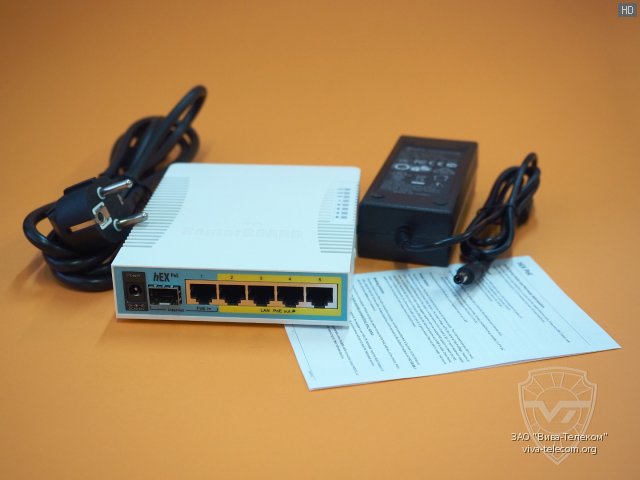
«В комплект поставки PoE маршрутизатора Mikrotik hEX PoE (RB960PGS) входит:1. Коммутатор2. Блок питания3. Краткая инструкция пользователя.»
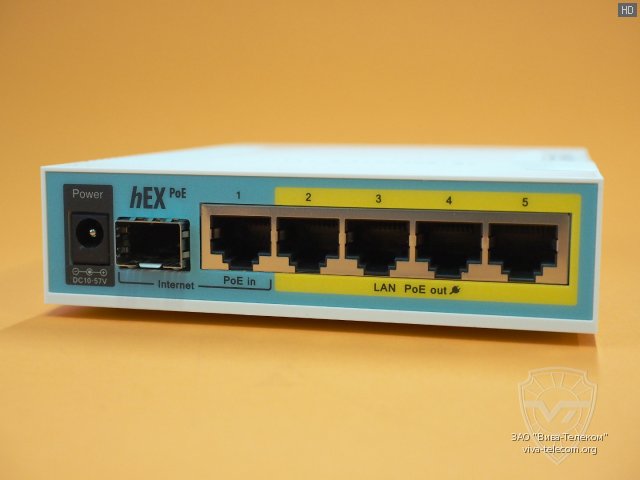
«Передняя панель Mikrotik hEX PoE, по порядку укажем все разъемы, слева направо:1. Разъем питания2. SFP порт3. ЕTH порты 1-5На портах ETH остановимся немного подробней, через 1 PoE порт можно запитать сам роутер Mikrotik hEX PoE, а остальные порты со 2 по 5 уже сами могут запитать какое нибудь стороннее устройство, будь то точка доступа, телефон, роутер или другое совместимое PoE устройство.SFP порт работает на скоростях 1.25G и поддерживает SFP трансиверы как своего производства, так и стороннего (по совместимости сторонних, лучше проверить на сайте производителя маршрутизатора).»
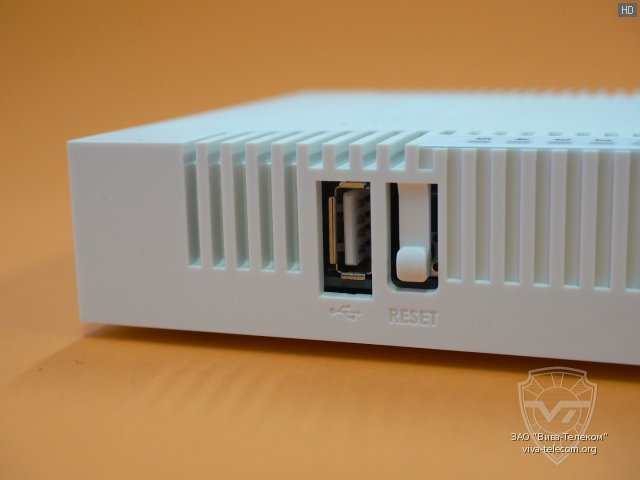
«USB 2.0 порт в Mikrotik hEX PoE RB960PGS и кнопка RESET.»
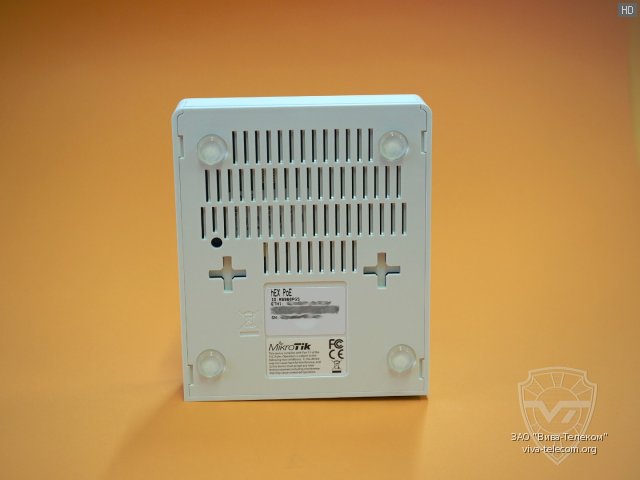
«На нижней части корпуса маршрутизатора Mikrotik hEX PoE по периметру расположены резиновые ножки, не позволят поцарапать стол и сам пластиковый корпус не будет скользить.А с помощью четырех позиционных креплений можно закрепить корпус роутера на стене, повернув в любую сторону портами.Вентиляционные отверстия улучшат охлаждение платы за счет притока воздуха.»
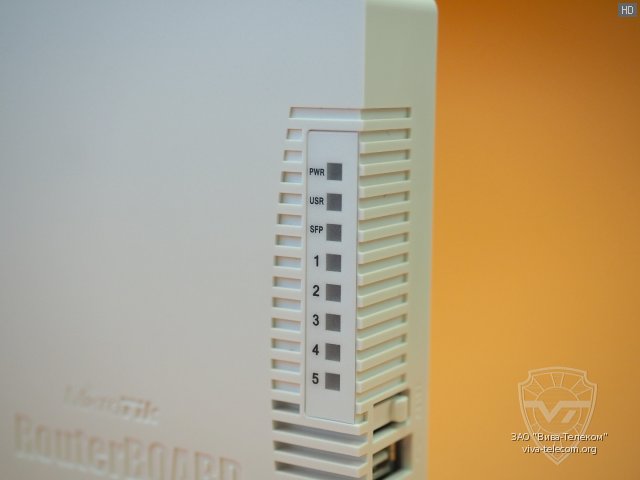
«На верхней панели расположены индикаторы активности маршрутизатора, здесь и индикатор питания устройства, индикатор активности, работы SFP порта и индикаторы обычных ETH портов.»
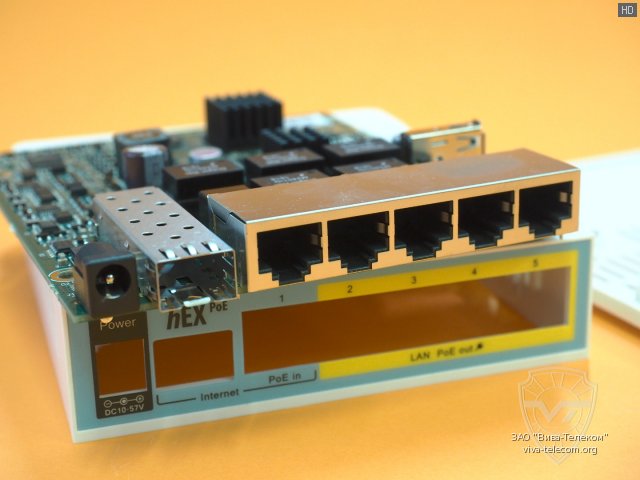
«Открыв корпус роутера видим, что ETH порты роутера Mikrotik hEX PoE в металлическом корпусе.»
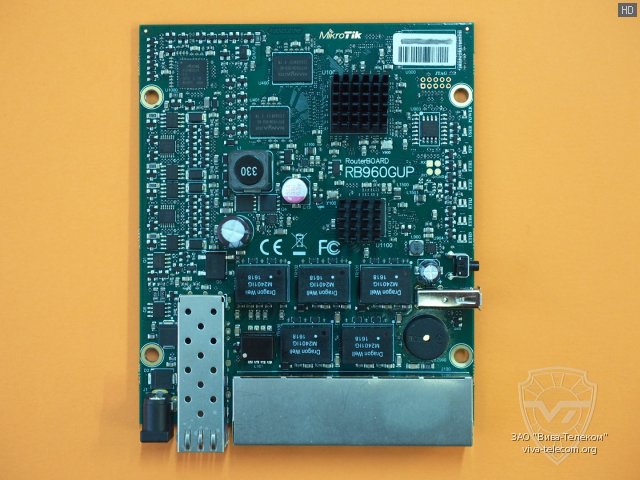
«Печатная плата Mikrotik hEX PoE RB960PGS вид сверху»

«Распаянные на плате порт USB и кнопка RESET.»
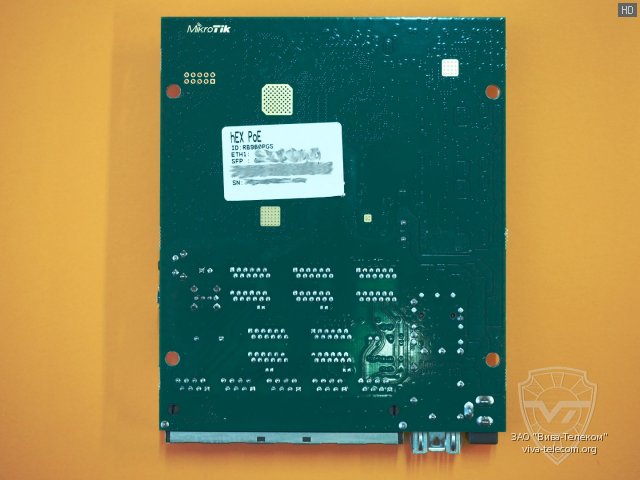
«Печатная плата Mikrotik hEX PoE RB960PGS вид снизу.»
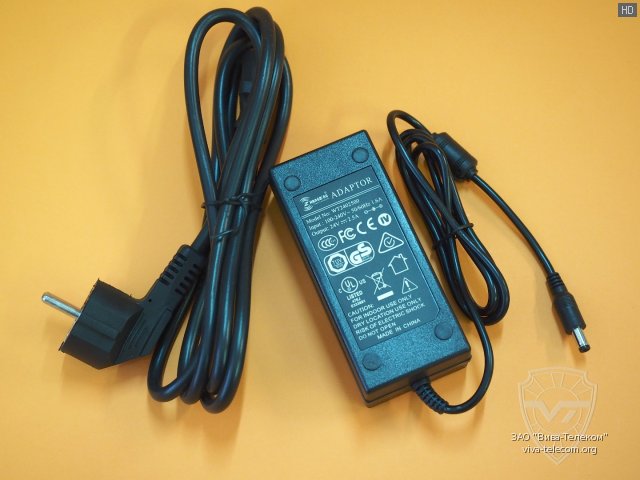
«Блок питания для маршрутизатора Mikrotik hEX PoE (RB960PGS) со следующими выходными характеристиками:24В, 2,5А.»
MikroTik supported PoE-Out standards
MikroTik devices can support some or all of the following PoE standards:
Passive PoE-Out up to 30 V — PoE standard, which does not require negotiation between PSE (Power Sourcing Equipment) and PD (Powered Device). For PoE-out uses the same voltage as supplied to the PSE (Power Sourcing Equipment). PoE-Out Standard for devices which supports input voltage up to 30 V. PD resistance on spare pairs should have range from 3kΩ to 26.5kΩ. (e.g. hEX PoE lite, RB3011UiAS-RM, RB2011iL-IN.)
Passive PoE-Out up to 57 V — Works same as low voltage (up to 30 V) PoE-Out, but is also capable to deliver high voltage over PoE ports. The output voltage depends from the power source connected to PSE. Can power up af/at compatible devices, which accepts power over 4,5 (+) and 7,8 (-), and does not require PoE negotiation. PD resistance on spare pairs should have range from 3kΩ to 26.5kΩ. (e.g. cAP ac, hAP ac, wsAP ac lite.)
IEEE Standards 802.3af/at — Also called PoE Type 1/PoE+ Type 2, are PoE standards Defined by the IEEE. The aim of these standards is to reduce incompatibility between vendors. MikroTik PSE with af/at support is capable of powering both a Type 1 and a Type 2 PD. Valid PD should have PoE-In resistance from 23.75kΩ to 26.25kΩ. MikroTik devices which support af/at standard can also switch to Passive PoE-Out mode. (e.g. hEX PoE, CRS112-8P-4S-IN, CRS328-24P-4S+RM.)
Each PoE-Out implementation supports overload and short-circuit detection.
Note: Some MikroTik devices support all of the described standards (e.g. hEX PoE, PowerBOX Pro, CRS112-8P-4S-IN etc…)
PoE-Out notifications
PoE-Out LEDs
Models with dependant voltage output
PoE-Out LED behaviour can differ between models, but most of them will indicate PoE-Out state on one additional LED. Devices with one voltage output will light:
- Red colour LED — PoE-Out port state is powered-on (auto or forced-on mode).
- Blinking Red colour LED — PoE-Out port state is short-circuit
Models with selectable voltage output
Models with multiple voltage options can indicate additional information:
- Green colour triangle LED — PoE-Out port state is powered-on (auto or forced-on mode), PD uses low voltage.
- Red colour triangle LED — PoE-Out port state is powered-on (auto or forced-on mode), PD uses high voltage (af/at or passive).
- Blinking Green colour triangle LED — PoE-Out port state is short-circuit or overload
- Blinking Red colour triangle LED — PoE-Out port state is short-circuit or overload
Model-specific LED behaviour
PoE-Out Logs
To avoid unnecessary logging in cases when PD is not powered because of current-too-low, RouterOS will filter such events, and add one log per every 512 current-too-low events.
Logs can be disabled if necessary:
/system logging set topics=info,!poe-out /system logging set topics=warning,!poe-out
PoE-Out Warnings in GUI/CLI
To notify a user about important PoE-Out related problems, messages will be shown in Winbox / Webig and CLI interface fields:
1 RS ;;; poe-out status: overload
ether1 ether 1500 1588 9204 64:D1:54:61:D5:E0
Webfig and Winbox will notify user under interfaces:

